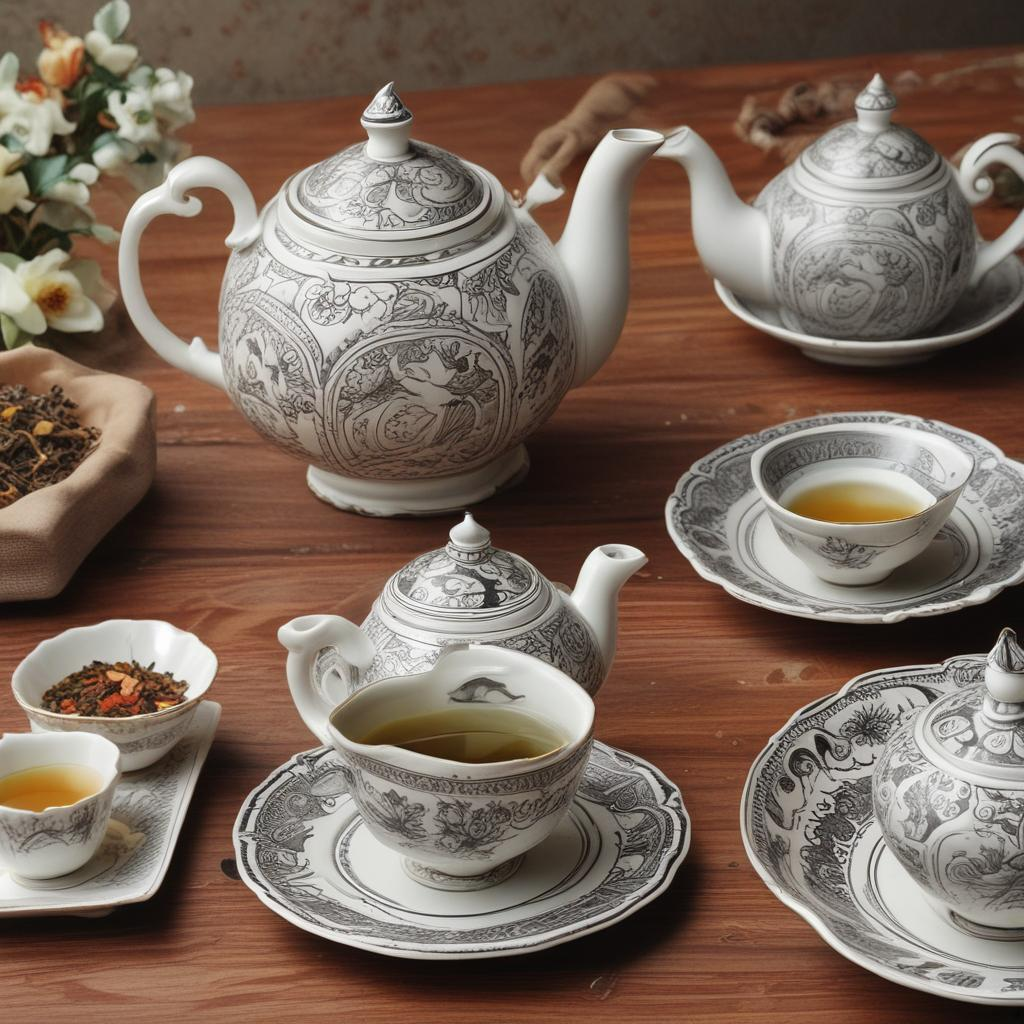As the steam gently wafted from the antique porcelain teapot, a sense of calm and tradition filled the air. It was at my grandmother's cozy dining table where I first discovered the true essence of tea. She had an old, elegantly decorated teapot, which she cradled with such regard that even as a child I knew there was something special about this daily ritual. With each pour, she would recount stories of her youth in India – tales of sprawling tea gardens under the shadow of the Himalayas and the meticulous care of harvesting delicate tea leaves. Each sip was not just a taste of warm, soothing liquid but a sip of history, culture, and family tradition.

This introduction to the world of tea ignited a profound appreciation in me for what is arguably the globe’s most universal beverage. Tea is not simply a drink; it is an experience steeped in history and embraced by numerous cultures around the world. It serves as a window into the customs and traditions of societies, a subject well worth exploring to understand its timeless appeal and elegance.
The Origins and Global Journey of Tea
Tea's discovery dates back to ancient China, credited to Emperor Shen Nong in 2737 BCE. Legend has it that leaves from a wild tree blew into his pot of boiling water, revealing both the flavor and medicinal properties of what we now know as tea. This fortuitous discovery has transcended millennia, evolving into a cultural institution in many countries.
The Ceremonial Grandeur of Tea
Different regions of the world celebrate tea in distinctive ways. In Japan, the tea ceremony, or 'Chanoyu', is a choreographic ritual of preparing and serving Japanese green tea, or matcha, alongside traditional Japanese sweets to balance with the bitter taste of the tea. This ritual is a meditative practice that embodies harmony, respect, purity, and tranquility—a philosophy central to Japanese culture.
In contrast, the British afternoon tea is a quintessential social experience, featuring an array of teas accompanied by scones, sandwiches, and cakes. This practice was popularized in the 19th century by Duchess Anna of Bedford, who initiated the idea of a tea break to curb the 'sinking feeling' during the late afternoon.
Cultural Significance of Tea
Across the globe, tea plays a significant role in social rituals. In Morocco, serving mint tea is a sign of hospitality, made with green tea, mint, and a significant amount of sugar. The process of preparing and serving the tea can be just as important as drinking it, with the pouring of the tea from high above the glass being a practice of skill and a demonstration of hospitality.
Similarly, in Russia, the 'Samovar'—a large metal container used to boil water—is the centerpiece of tea traditions, symbolizing the heart of the home and a perpetual readiness to welcome guests. Russian tea is typically strong, served with sugar, lemon, or jam.
The Health Benefits of Tea
Tea isn't only valued for its cultural significance and varied ceremonial practices; it also boasts numerous health benefits. Rich in antioxidants, teas like green and black tea are celebrated for their disease-fighting properties. Research suggests that regular tea drinking can improve heart health, aid in digestion, and potentially reduce the risk of cancer and Type 2 diabetes. Theanine and caffeine, found in tea leaves, are compounds that can enhance brain function and mood, making tea a popular choice for those seeking both physiological and psychological benefits.
The Art of Crafting and Blending TeaThe careful crafting and blending of tea are arts that have been refined over centuries, with skilled artisans often coming from generations of tea producers. The best teas in the world are often the result of intricate knowledge of the soil, climate, and altitude—factors that all influence a tea's aroma, strength, and flavor profile.
- Tea masters from China are famed for their skill in creating delicate flavors through the precise control of fermentation and drying periods.
- In India, the Assam, Darjeiling, and Nilgiri teas each have unique characteristics bestowed by the particular climatic conditions of their regions.
With the modern resurgence in tea popularity, contemporary tea trends have also emerged. Matcha lattes, cold brew teas, and artisanal tea blends cater to a new generation of tea drinkers. Innovations in tea crafting, like the addition of new flavors and the fusion of culinary influences, continue to attract both young and seasoned tea enthusiasts alike.
Tea houses and cafes, embracing both tradition and innovation, now play host to those seeking both solace and social connection over a cup of tea. These settings provide a modern-day sanctuary where the ritual of tea drinking fosturlands interaction, reflection, and community.
ConclusionThe elegance of tea lies not only in its flavors and the calm it instills but also in its ability to bridge past and present, tradition and modernity. From ancient ceremonies to contemporary tea innovations, tea remains a powerful medium through which stories are told, cultures are explored, and traditions are preserved. As my grandmother once shared at her dining table, each cup of tea holds a story, a piece of history, and a fragment of the world, waiting to be savored and discovered anew.


.jpg)






.jpg)



0 Comments